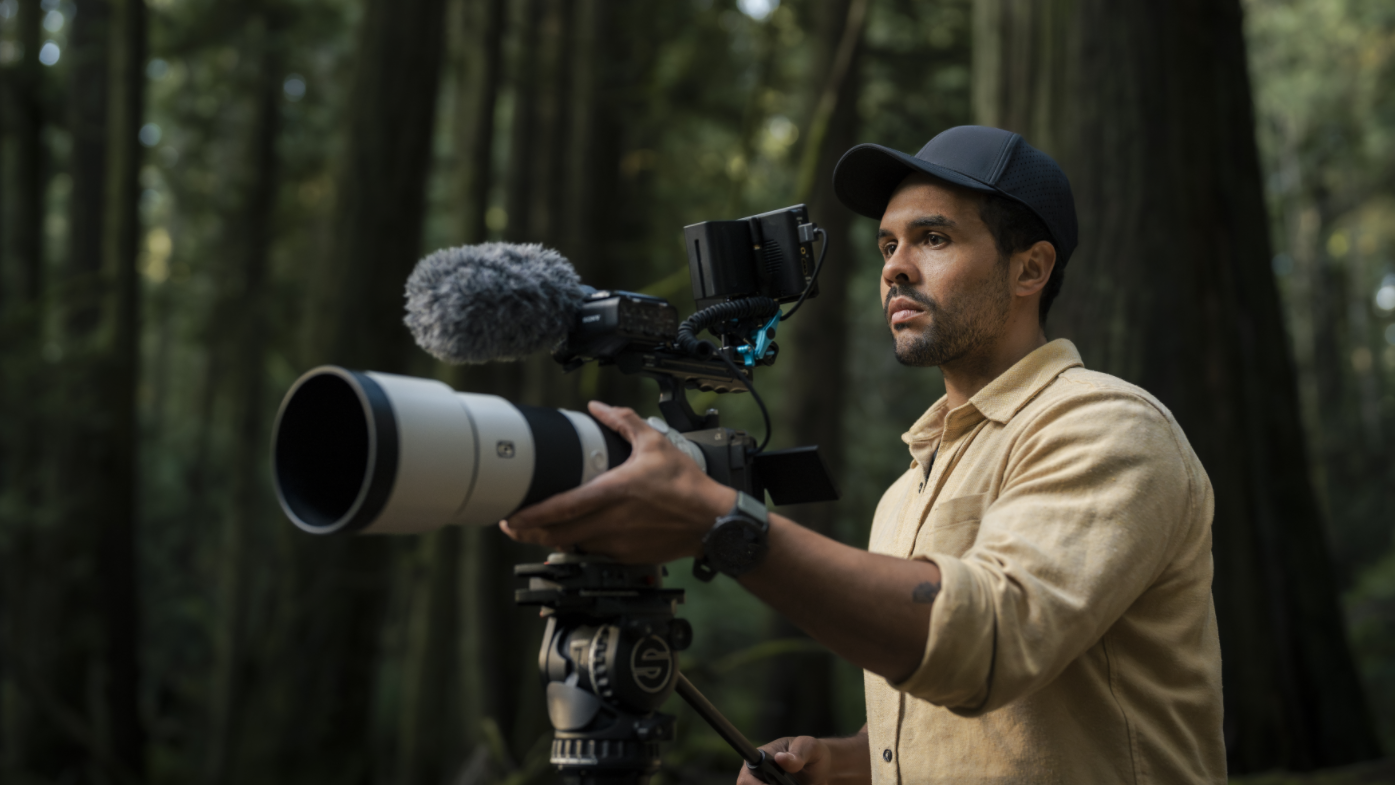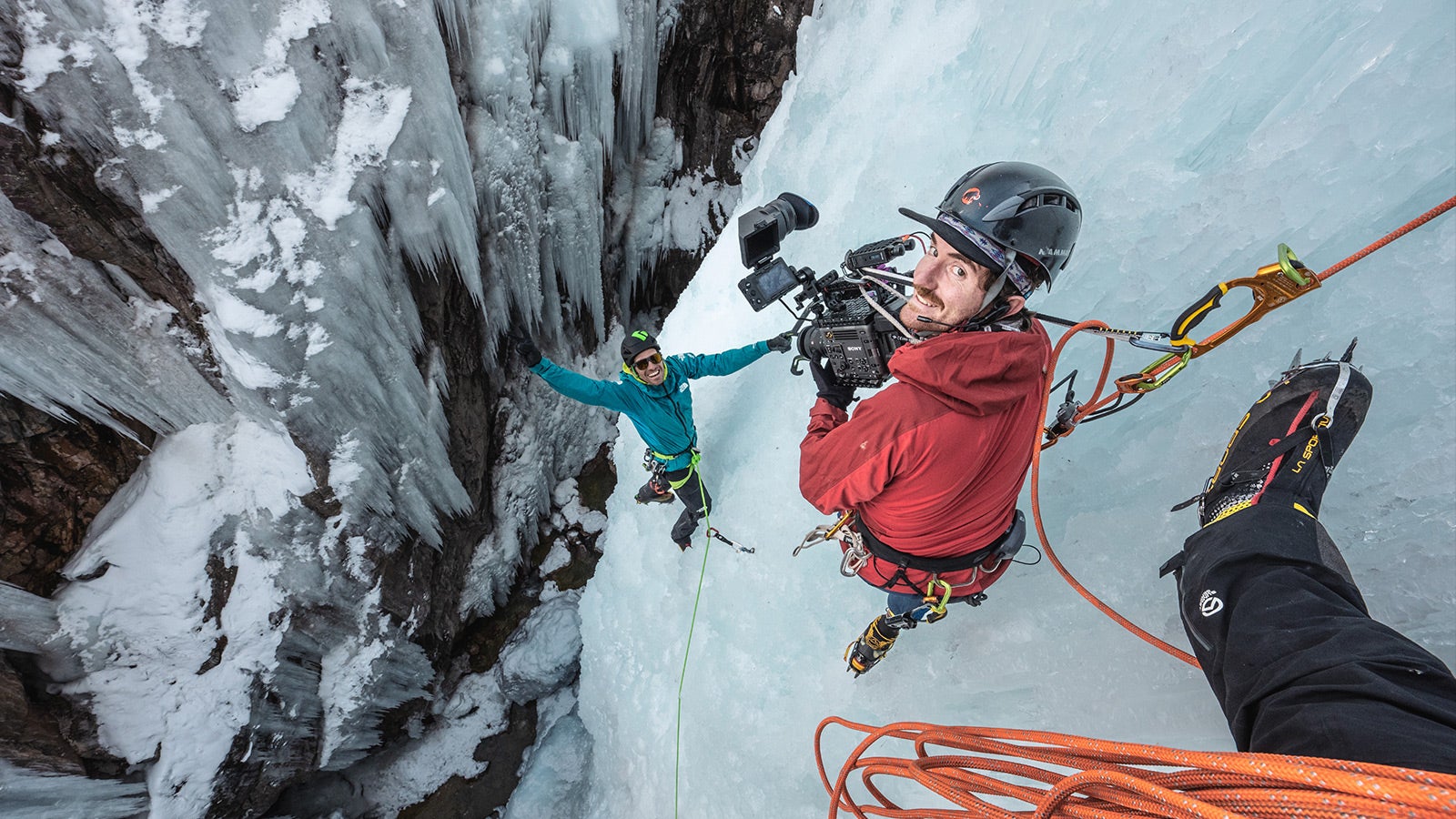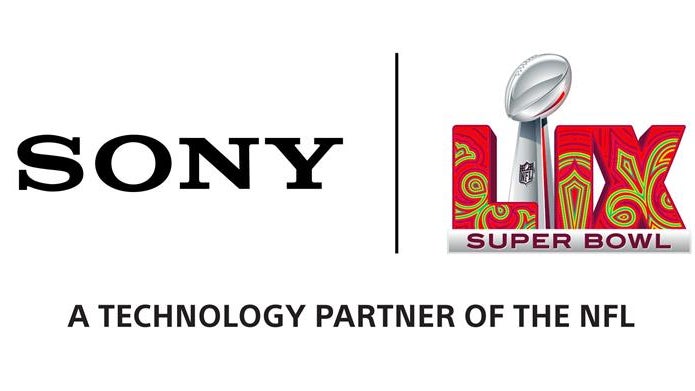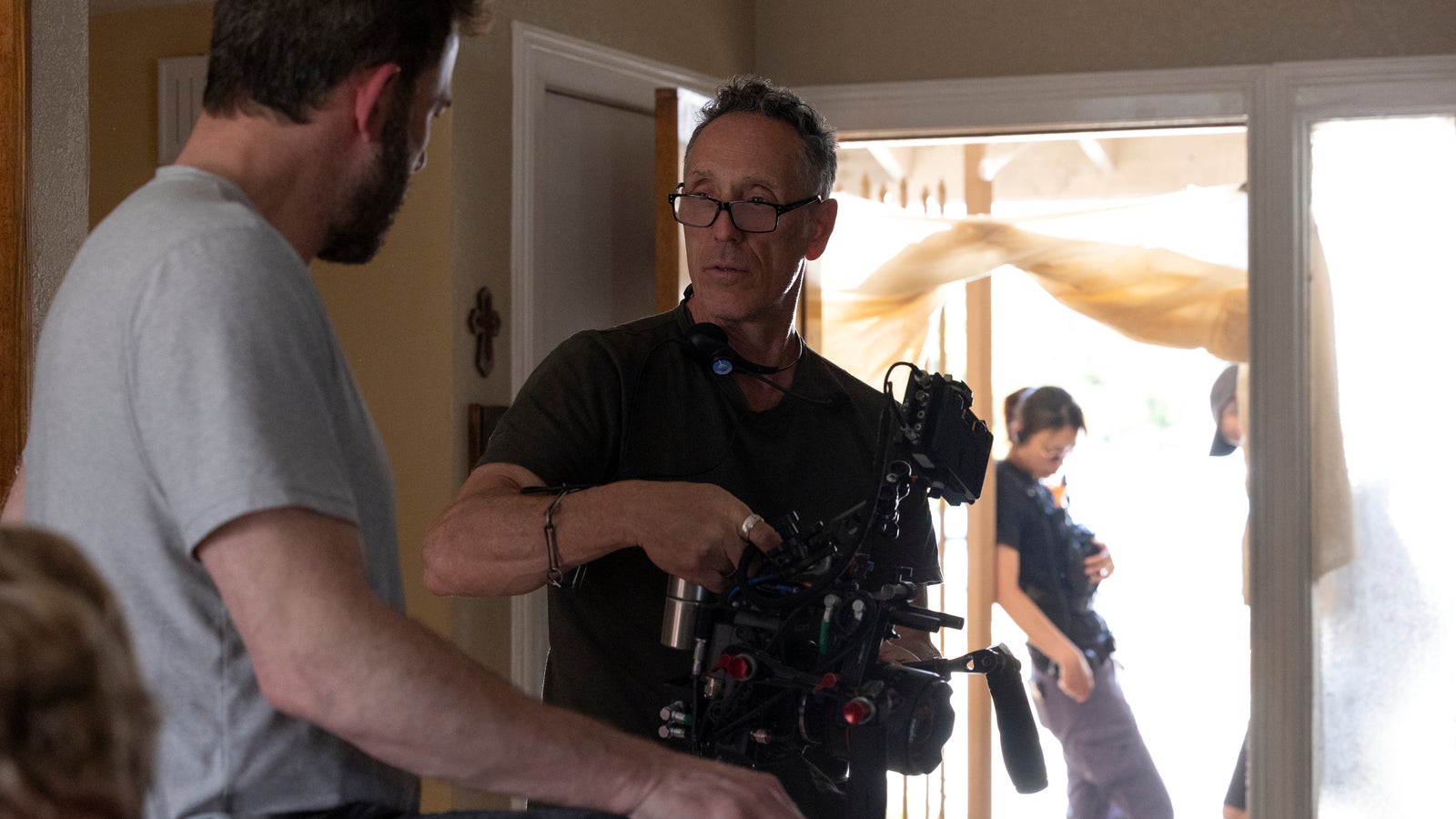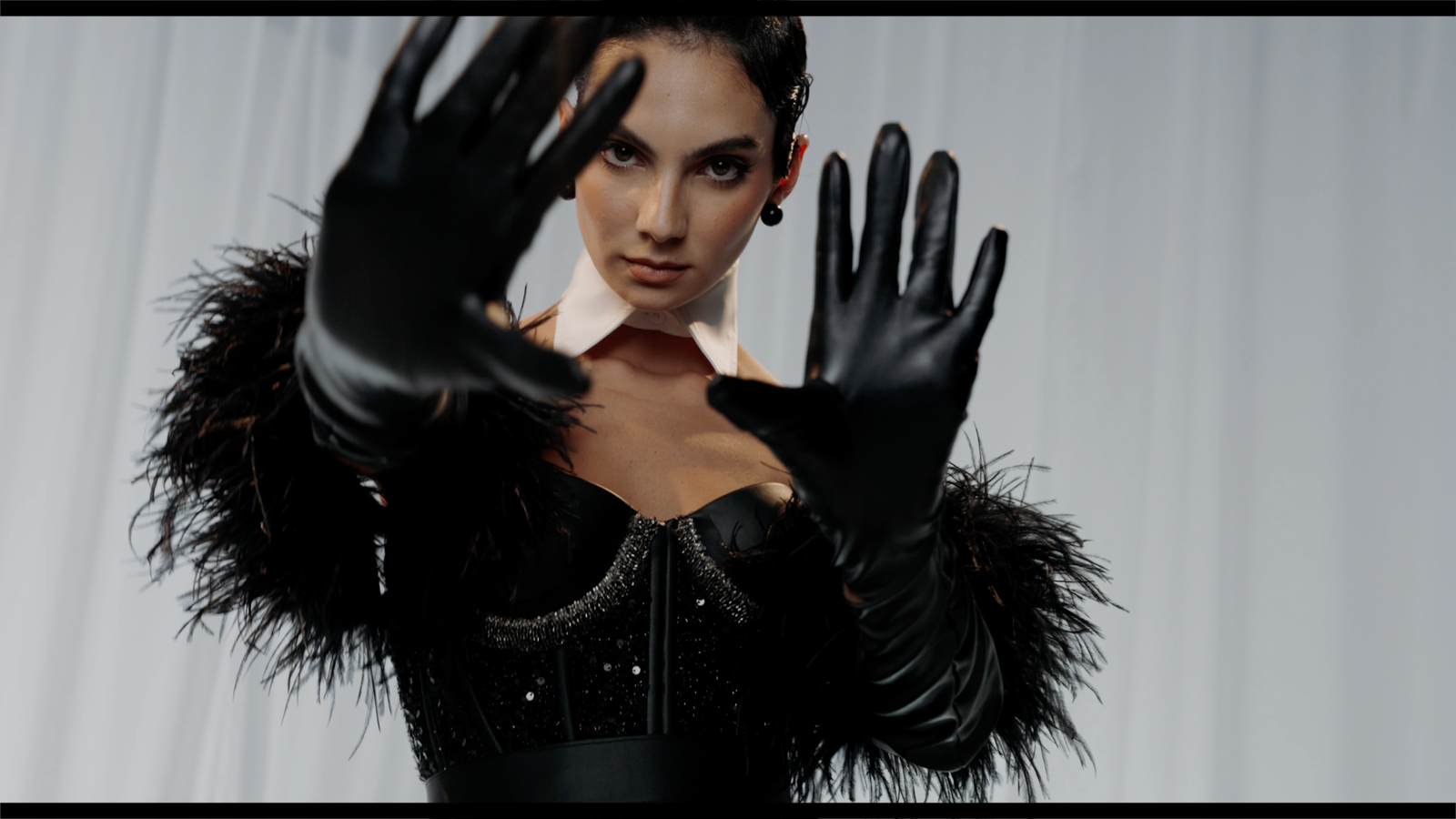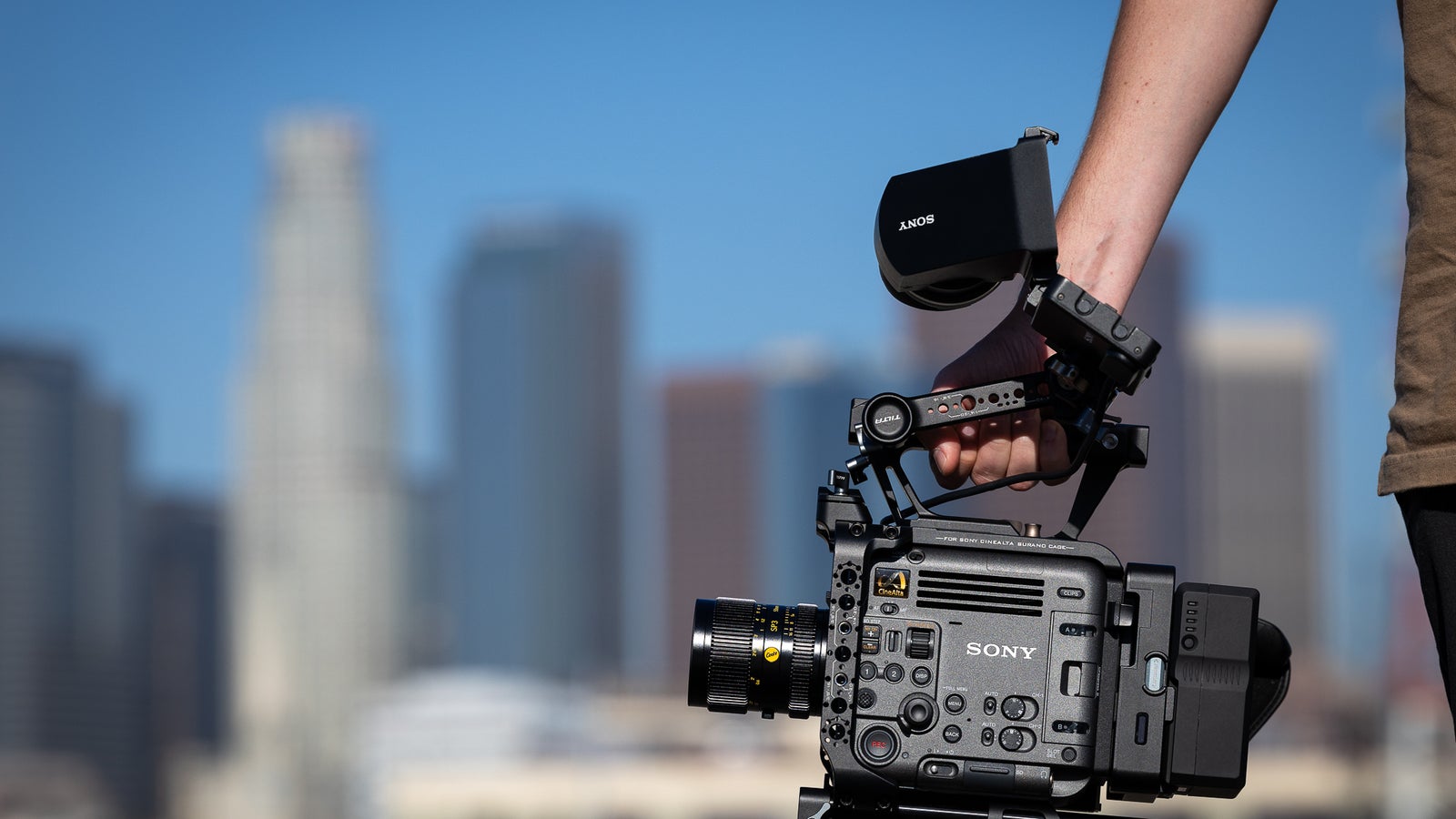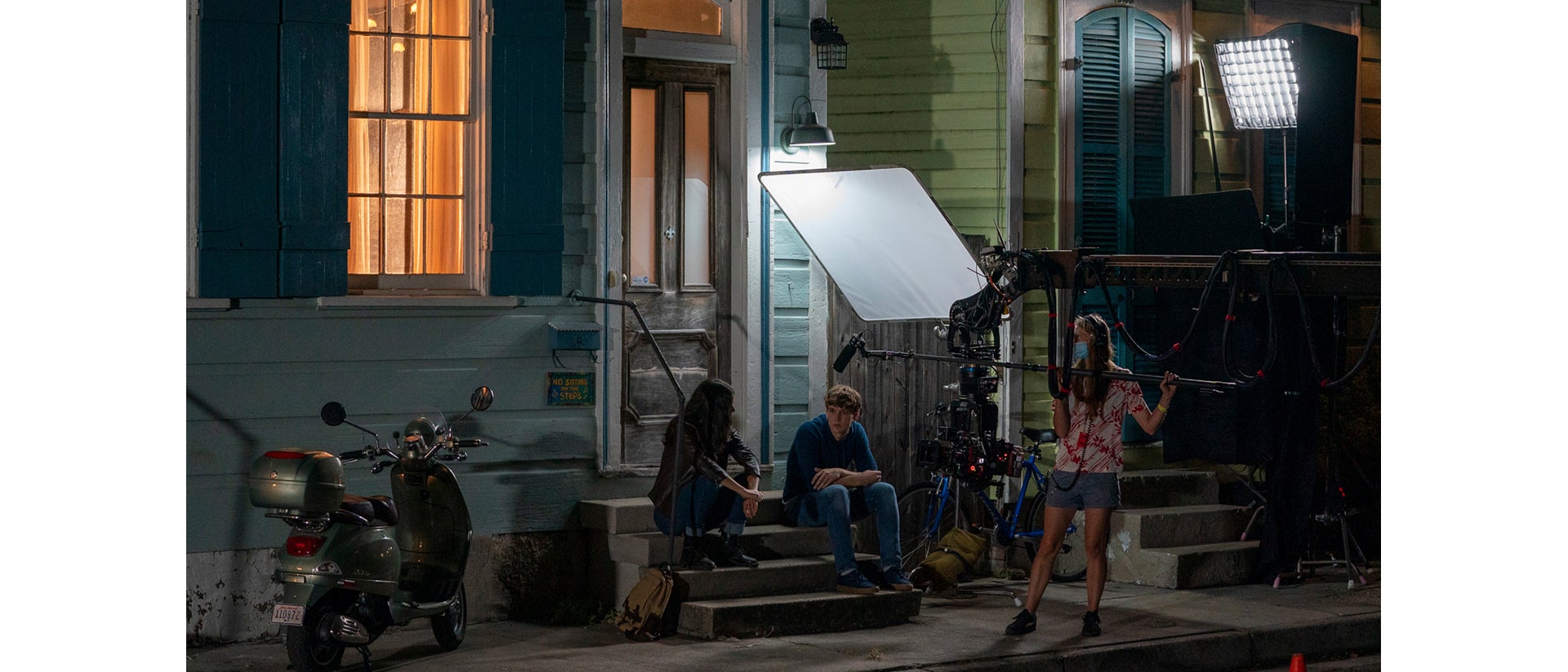
06-25-2021 - Case Study
The Cinematographer and Scene Blocking – Part 2
By:
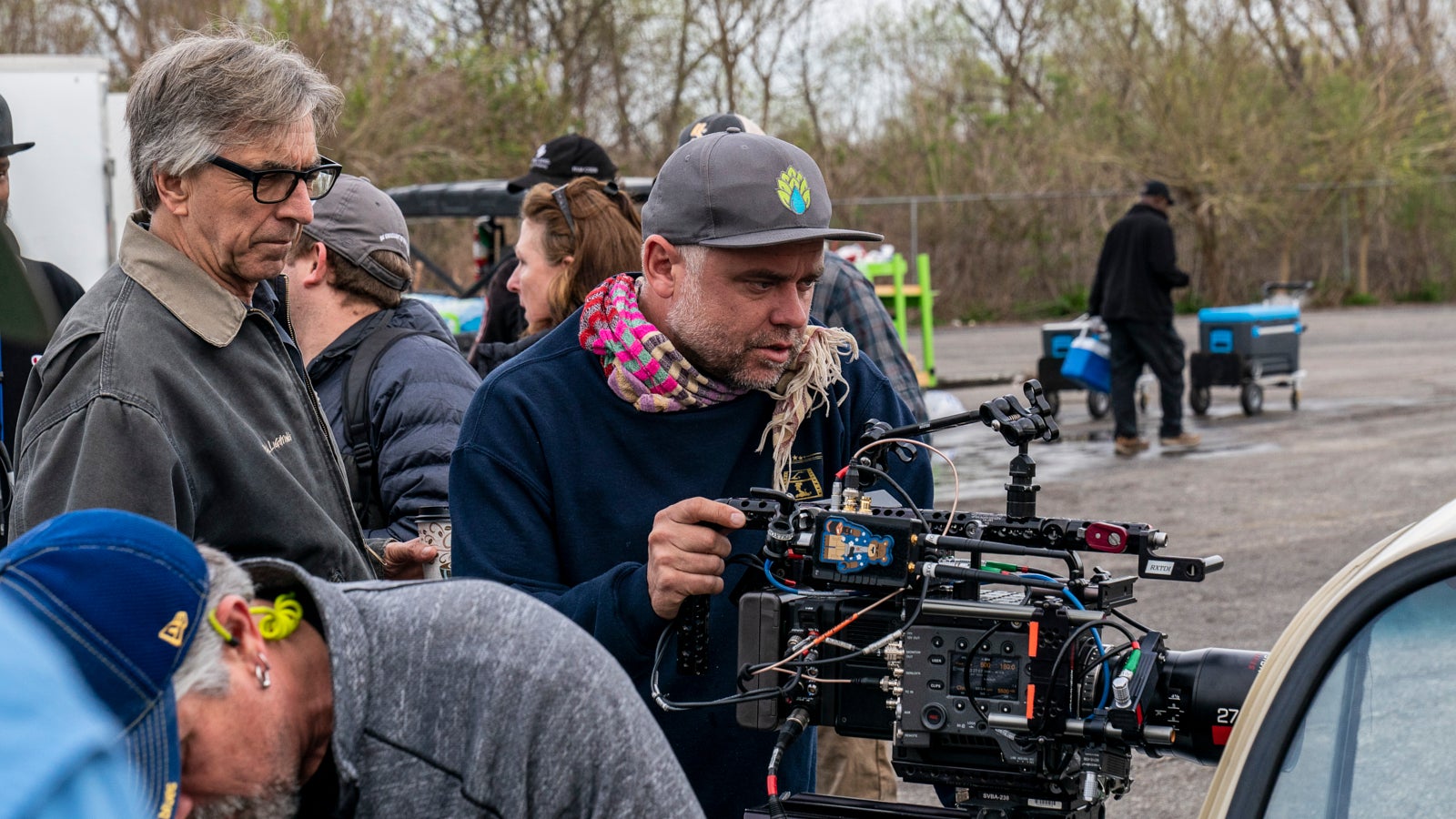
DP John Lindley, ASC, left, lines up a shot on the set of "Your Honor"
Part 1 of this article can be found HERE.
Different philosophies about how to shoot scenes
In a blocking, there are a lot of different philosophies in working out the shots and lenses and determining how to visually cover a scene.
Many directors are of the view that every day or sequence should begin with what is called a “master shot.” A master shot is usually a wide shot that covers the entire scene from beginning to end. The thinking is that if time prevents the director from getting all the other shots they may want, at least they will have the whole scene on camera from one angle. Also the master allows everyone to see the physical layout of the scene and the evolving geography as actors move from one position to another. In an action sequence it can establish the direction of an action and give the audience an overview to prevent that action from becoming confusing.
There are some problems with this approach. To ask an actor to get every movement and every line correct in one long shot and also provide an elegant and nuanced performance is no easy undertaking in a complex sequence. It can be done, but it takes a lot of time. As it is unlikely the director will use the entire master-shot from beginning to end, one wonders if it is time well spent? If the director really wants to get at least one good take of the entire action it means that each time one thing goes wrong the whole master has to be shot again. Inevitably the master shot is also more complex than any other shot as it is covering the entire action. When action is broken up into small pieces, it’s easy to do, but when it has to be done all at once it's harder. Even when a master shot succeeds, the director and cinematographer have probably made huge compromises.
It's very hard for example to hide lights in a wide shot, so the lighting may not be ideal. Same with the microphone positions and many other things. Everyone does their best to get everything right, but it’s harder when everything is in the shot and harder translates to taking more time. I have seen half a production day or more go towards shooting the master. What is interesting is that when directors get into the editing room they often find that the shot they use the least is... the master shot. There are many reasons for this, but one of the main ones is that it is harder to see the details of a performance in a wide shot. Further, there are those who will argue that by forcing the actors to get it right in the master shot, a lot of their energy is expended and they are less good later in the day when the close-ups are shot.
There is another approach that some directors prefer; they break the master into different parts knowing that they have the cover they will need coming in the close-ups and mediums that will allow them to get past any errors in the master-shot. By putting less attention on the perfection of the master it takes up less of the day. This works, unless the few moments of imperfection turn out to be the exact moments they need. A risk, certainly, but one I have seen save a lot of time.
Other directors believe that the day should be started with close-ups and mediums to get the substance of the scene at its greatest intensity and while the actors are at their freshest. A close-up creates a greater emotional amplification of a performance than a wide shot, so this is where the scenes are won or lost for many directors. Once they get these key moments, they may finish the day getting the parts of the master they feel they will need to establish geography.
Still other directors like improvisation and will encourage actors to alter their performance from take to take in the search of a greater and more intuitive truth. But if each take or shot has a different positioning by the actor, it makes cutting between the shots virtually impossible. To disguise the changes in position, a director will have to get plenty of reverse shots or shots of other things in the scene, so that they can return to the actor who has been changing with each take, and not have the audience notice those changes. I have worked with “A” list actors who constantly change their physical positioning and I know it creates challenges in the editing room, but it can also dramatically improve performances.
Every film has a crew member called the Continuity Person (or Script Supervisor). Their job is to make sure everything can be cut together. They will keep notes on actors’ positions, about what lines are said, and anything that is altered, from a burning cigarette to the curl of hair on an actor's forehead. Continuity will give information to the actors about their changes in positions and usually the actors listen and then replicate their earlier movements; but some don’t.
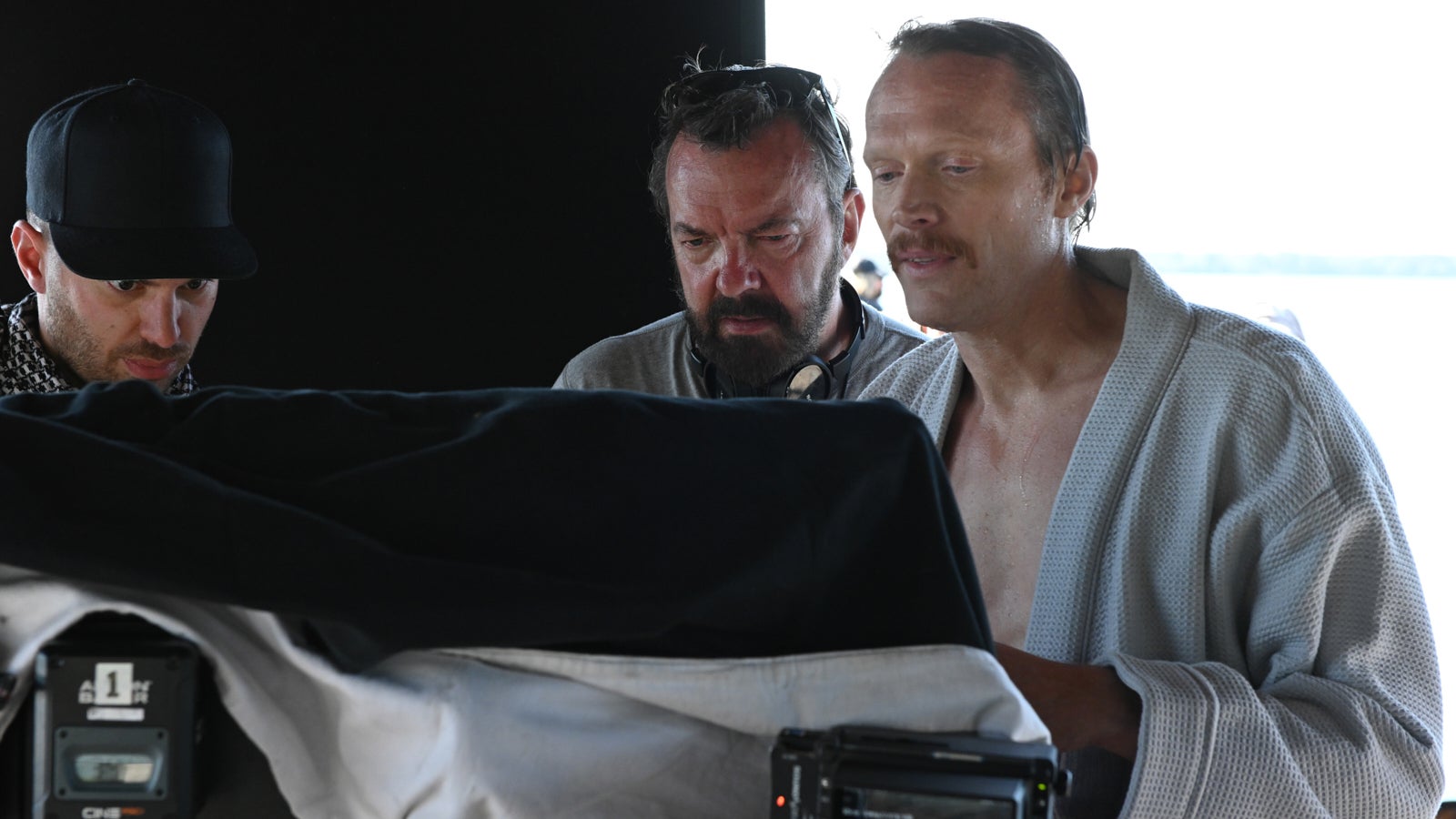
DP Khalid Mohtaseb, left, evaluating a shot with Alan Ball and Paul Bettany
Multi-cameras
One remedy that helps actors who improvise is to use multiple cameras. This is a point of some considerable controversy between directors. Some directors feel that having only one camera on set allows them to concentrate wholly on an individual performance and pick up on details they would otherwise miss. Other directors feel that by having cameras on both sides of a scene it means all the actors are on camera at the same time, and it raises the overall quality and integrity of performances while allowing the crew to shoot at a greater speed.
To our earlier example, if the actor does change something, but a director is using two or three cameras then the shots from those cameras will cut with each other, and the actions will all match (at least for that take).
Also, when using multiple cameras, some cameras can focus on details and not just faces and performance. These may seem incidental at the time of shooting but can prove valuable in the editing room. What is interesting is when an editor cuts from a face (where the audience presumes the attention should lie) to an object or detail, that object or detail is presumed to have a special meaning or significance. So multiple cameras can imbue a sequence with meanings and complexities that the single-camera technique rarely facilitates.
The time saving of multiple cameras is also important. With the normal shooting daytime and money pressures, directors often abandon their shot lists as the day nears its end. They may have gotten what they believed are the essential shots, but they have also missed some key details, or missed shooting options which can be useful if the preferred editing design fails. To only shoot a scene in one way, is like only using one take; it may work, but a director may later regret not having it another way. But sadly, when a DP or director is working against the clock, the first thing they abandon are the variations, which producers may convince them are non-essential. Which they are. Until they aren’t.
Multiple-cameras provide something else. The unplanned. As much as we like to think that we can envision every shot we need in a sequence, I can assure you that a great deal is discovered on set. Until a set is lit, and actors inhabit it, and a good camera operator begins moving their camera, you can’t know the surprises that are there..Some of the best shots I have gotten in my films both as a director and a cinematographer came from a free moving camera without a plan.
Multiple cameras are also essential for action sequences and their blocking. You don't want to restage and reset complex stunt setups if you can help it and if you want to do it in one take you need multiple cameras. Of course it’s still possible to miss key parts of action even with multiple cameras, so you will want to assign each camera a specific coverage area and function. This is why we often storyboard big action sequences and then assign shots in the storyboard to individual cameras (often with a few “safety cameras,” which overlap some actions in case a camera fails or misses something).
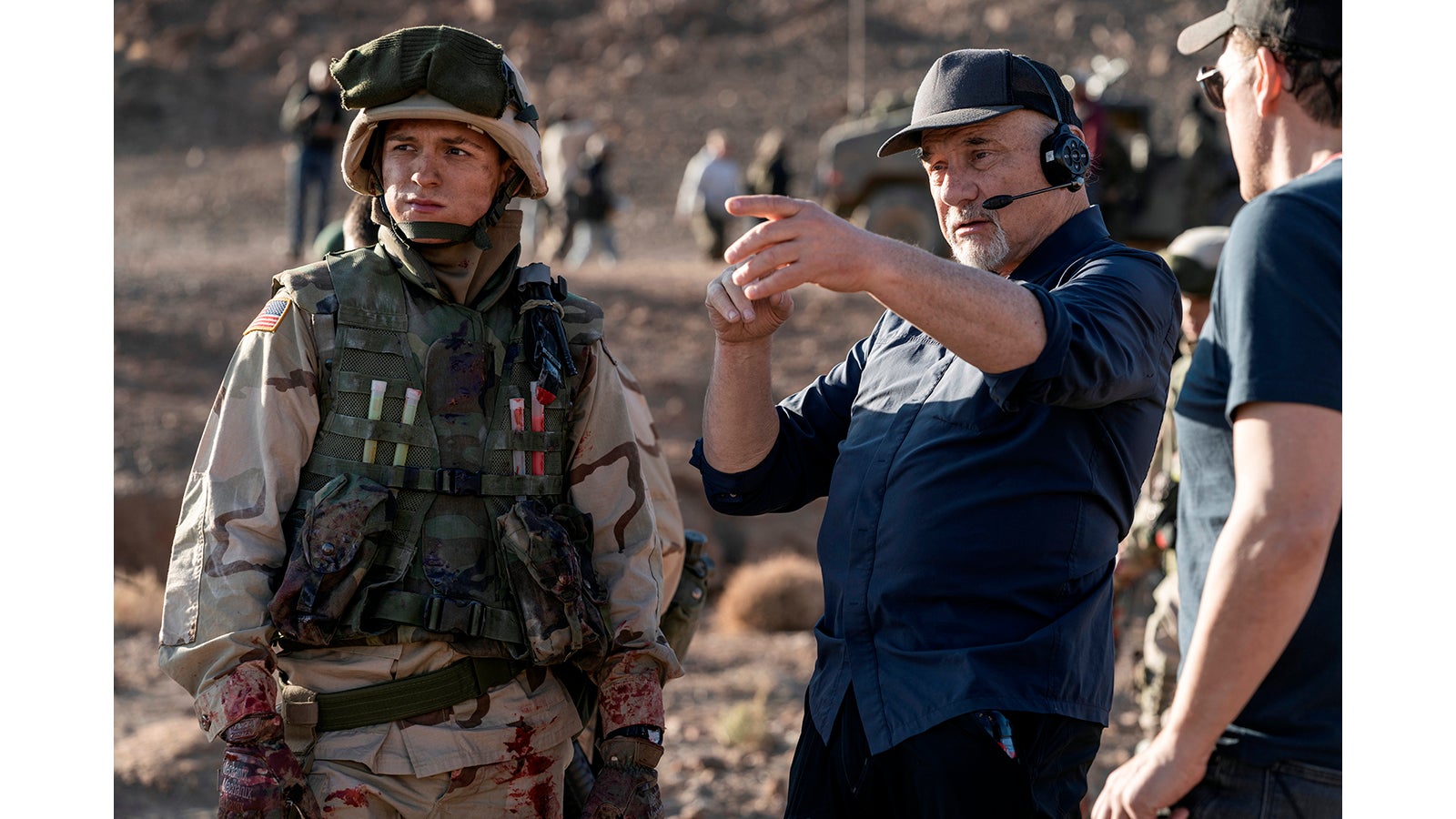
Newton Thomas Sigel, ASC, on the set of "Cherry"
The impact of camera placement
Be it multiple camera or single camera, in sequence planning, one has to consider the impact of the camera on the perception of performance. This can be seen during the blocking rehearsal. As both DP and a director I would always use a director’s finder to watch the action and then determine lenses and positions. Some finders are small and have adjustable magnification. They also have markings on their barrel that correspond to focal lengths which indicate to a director or DP which lens they preferred as they looked through the finder. Other larger finders allow you to actually attach your filming lenses to the finder eyepiece, so you can see the exact image the lens will produce on screen.
The relationship of an actor’s eye line (where they are looking) to the taking lenses is important. Generally, the closer the actor's glance is to the lens axis, the more powerful the performance can seem. A performance that is almost right down the barrel of the lens can be very powerful. By the same token a profile shot where we only see part of one eye, reduces the intensity of the performance. Or if a character has their back to the lens, the performance may be non-existent, but the sense of mystery, strong. The director and the DP have many choices to make regarding eyeline and each one will inevitably have an impact on audience.
Some types of coverage are considered appropriate to different genres. For example, many comedy directors feel comedy plays better in two shots and not in tight singles or with a moving camera. But in drama, a moving camera is a useful tool as it influences the perception of character and action. Movements can be simple, like a push-in at a key moment, or they can be complicated like a crane out of a close-up all the way back to a very wide shot.
Camera movement
Every movement has a meaning or creates a feeling in an audience so must be selected carefully. For the grips and camera crew moving shots are more difficult; track or tracking boards have to be laid down, or a special crane has to be utilized. Like with actors, marks are used to indicate where the camera will land during complex movements, which determines where lights will go and where things like track need to go. There are so many different types of movements it would be impossible to list them all here, but the director and the DP both must recognize that every movement influences the audience and they have to look through the finder and anticipate the audience’s reaction to those movements.
Matching shots and seamless editing
Of course each shot in a sequence is only one part of a greater whole. It is an odd phenomenon when one thinks about it, that we can cut from one shot to another and not jolt the audience , at least generally. But if we violate certain principles this illusion will no longer work for the audience. The rule of thumb is that if you use a certain focal length and shoot from a certain distance from the subject in one direction, you should shoot the complementary shot (reverse shot) at the same distance and with the same focal length in the opposite direction. Then the cut is seamless. Also the eyeline on each side should match the other (i.e. if the actor is looking off-camera by ten degrees on one side, the actor opposite should also be looking off by ten degrees as well). To further help with the seamlessness, the lighting should be balanced and consistent on each side and moving shots should cut with moving shots and stationary shots should cut with stationary shots. Simple rules, but effective. You can break these rules, and many people do, but when you want the cutting to be seamless, this is the way to do it.
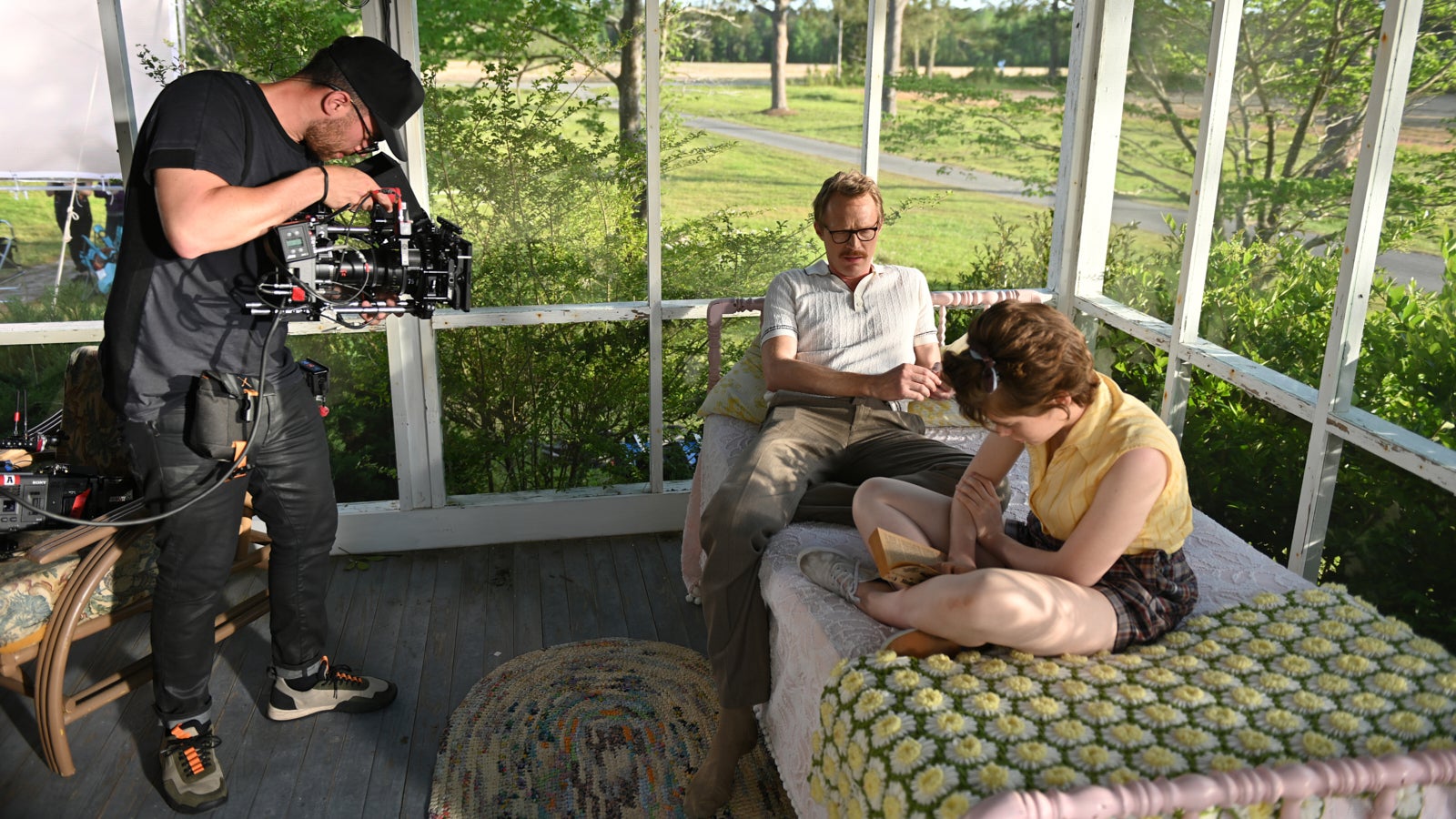
DP Khalid Mohtaseb shooting with VENICE Extension System
There is one final consideration in blocking, called axis.
Axis can best be understood by thinking of a train going across the frame and a camera on one side of the railway track. The train may be moving from right to left. If your second camera is on the other side of the same track the same train will be moving from left to right. If you cut those two shots together it appears as if that same train is going in two different directions. Now think of two characters speaking to each other. The eye-line between the two characters as they look at each other becomes like a train track. If you cross this “train track” it will seem as if both characters are looking in the same direction and not at each other. So what we typically do to avoid this problem is we draw a line through characters’ eye-lines and shoot on one side of that line and on one side only. We can, in certain circumstances, move the camera across that line and establish a new axis, providing the audience sees the move. In other circumstances the geography is so clearly defined that even if we cross the line the audience still has some idea of the relationships of the character’s position.
Nothing should be arbitrary
Nothing about the position of the camera or the position of actors in a scene should be arbitrary. The audience’s physical experience of an actor, be it in seeing them in a long shot, or just their face in a close-up, determines a large part of the audience’s perception, perception independent of the quality of a performance. The same is true of anything we film; action sequences, beautiful vistas, grotty interiors; how we shoot them matters. A director or cinematographer who doesn't think about blocking and coverage is only doing half their job.
About the author:
Steven Bernstein, DGA, ASC, WGA is an ASC outstanding achievement nominee for the TV series Magic City. He shot the Oscar winning film “Monster,” “Kicking and Screaming,” directed by Noah Baumbach, “White Chicks” and some 50 other features and television shows. The second film he wrote and directed, “Last Call,” stars John Malkovich, Rhys Ifans, Rodrigo Santoro, Zosia Mamet, Tony Hale, Romola Garai and Phil Ettinger, released late in 2020 in to theaters in selected cities.
Steven can be followed at Stevenbernsteindirectorwriter on instagram where he regularly posts short insights and illustrations about filmmaking.
